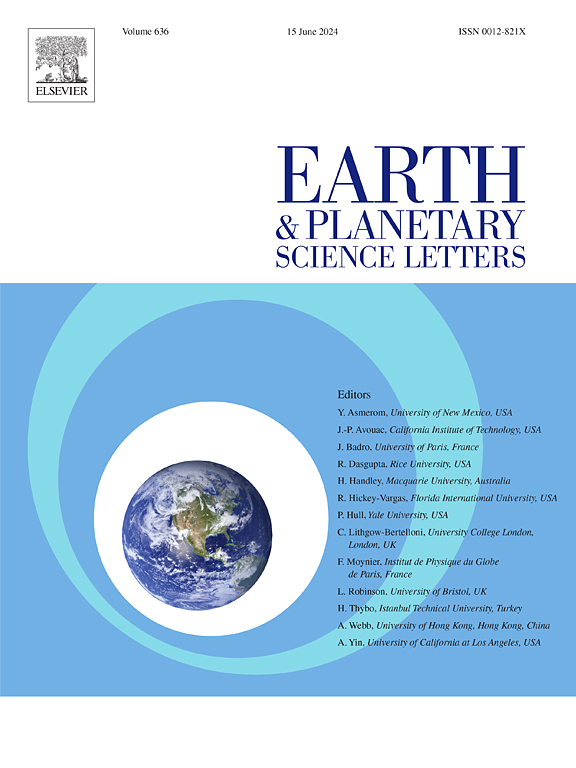Decoding the end-Devonian Hangenberg oceanic anoxia event: Insights from ironstones in South China
IF 4.8
1区 地球科学
Q1 GEOCHEMISTRY & GEOPHYSICS
引用次数: 0
Abstract
The Devonian-Carboniferous Hangenberg event (HBE) was a global oceanic anoxia event. The HBE had profound impacts on the surface environments and caused the sixth biggest bio-extinction in Phanerozoic, with ending the long-lasting greenhouse climate in the Devonian. However, possible mechanisms that triggered the HBE have long been a matter of debate. Enhanced continental weathering or oceanic upwelling has been proposed to be responsible for the HBE. Here, valuable information about the HBE is offered from chamosite and siderite ironstones with structures indicative of paleo-storms in South China. Based on sedimentology, stratigraphy and calcite U-Pb dating, we confirm that the chamosite ironstones and siderite ironstones were formed before and during the main anoxia interval of the HBE, respectively. The concentrations of rare earth elements, U and Mo, V/Cr ratio and Fe and C isotopes of the ironstones are collectively indicative of a redox-stratified ocean under a greenhouse climate at the beginning of the HBE. Subsequently, storm-induced upwelling likely led to surface water eutrophication and the expansion of the oxygen minimum zone, resulting in severe shelf anoxia. The genetic model proposed for the HBE may have implications for the trigger mechanisms of other OAEs in the context of greenhouse climates.
求助全文
约1分钟内获得全文
求助全文
来源期刊

Earth and Planetary Science Letters
地学-地球化学与地球物理
CiteScore
10.30
自引率
5.70%
发文量
475
审稿时长
2.8 months
期刊介绍:
Earth and Planetary Science Letters (EPSL) is a leading journal for researchers across the entire Earth and planetary sciences community. It publishes concise, exciting, high-impact articles ("Letters") of broad interest. Its focus is on physical and chemical processes, the evolution and general properties of the Earth and planets - from their deep interiors to their atmospheres. EPSL also includes a Frontiers section, featuring invited high-profile synthesis articles by leading experts on timely topics to bring cutting-edge research to the wider community.
 求助内容:
求助内容: 应助结果提醒方式:
应助结果提醒方式:


